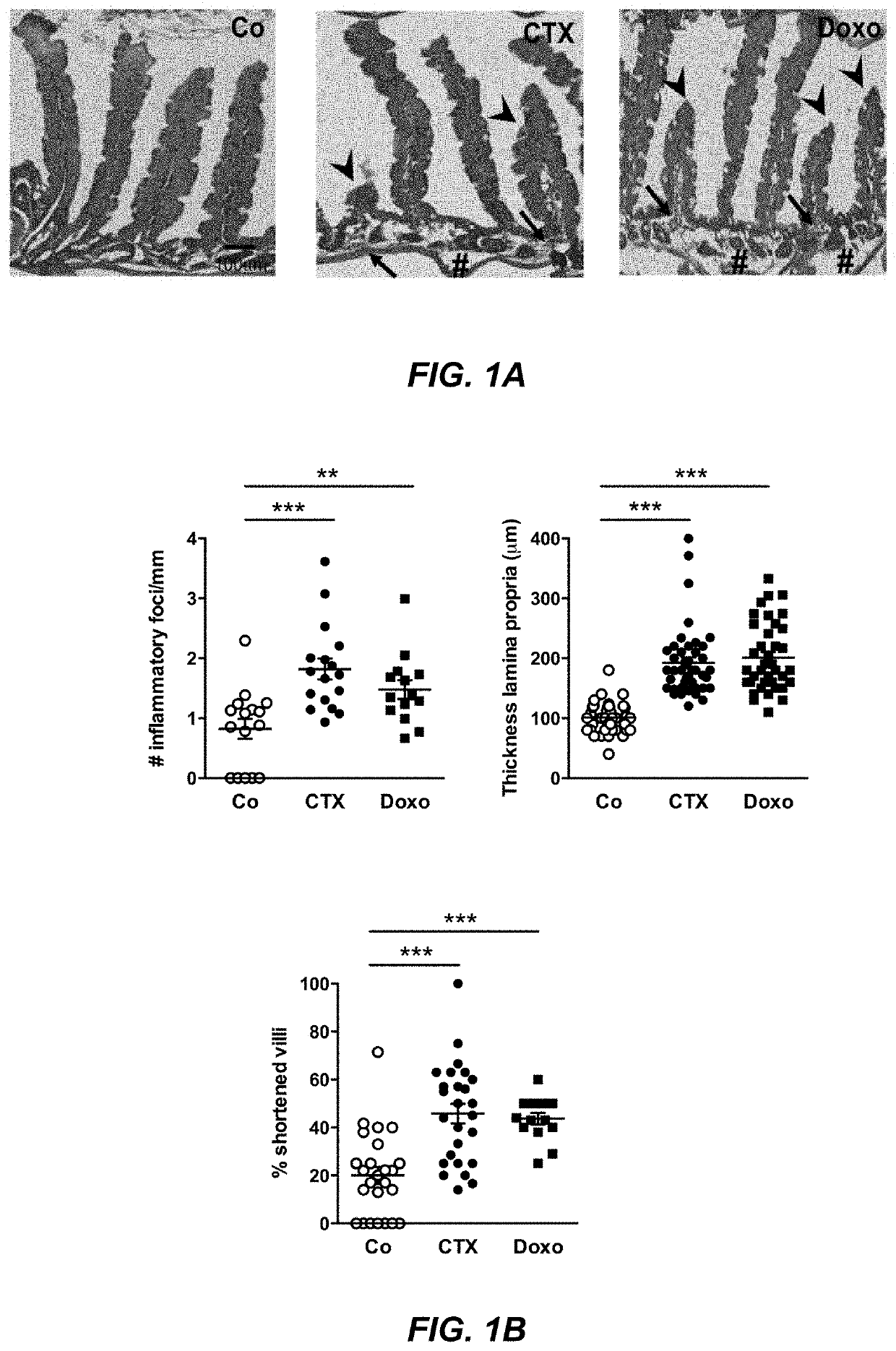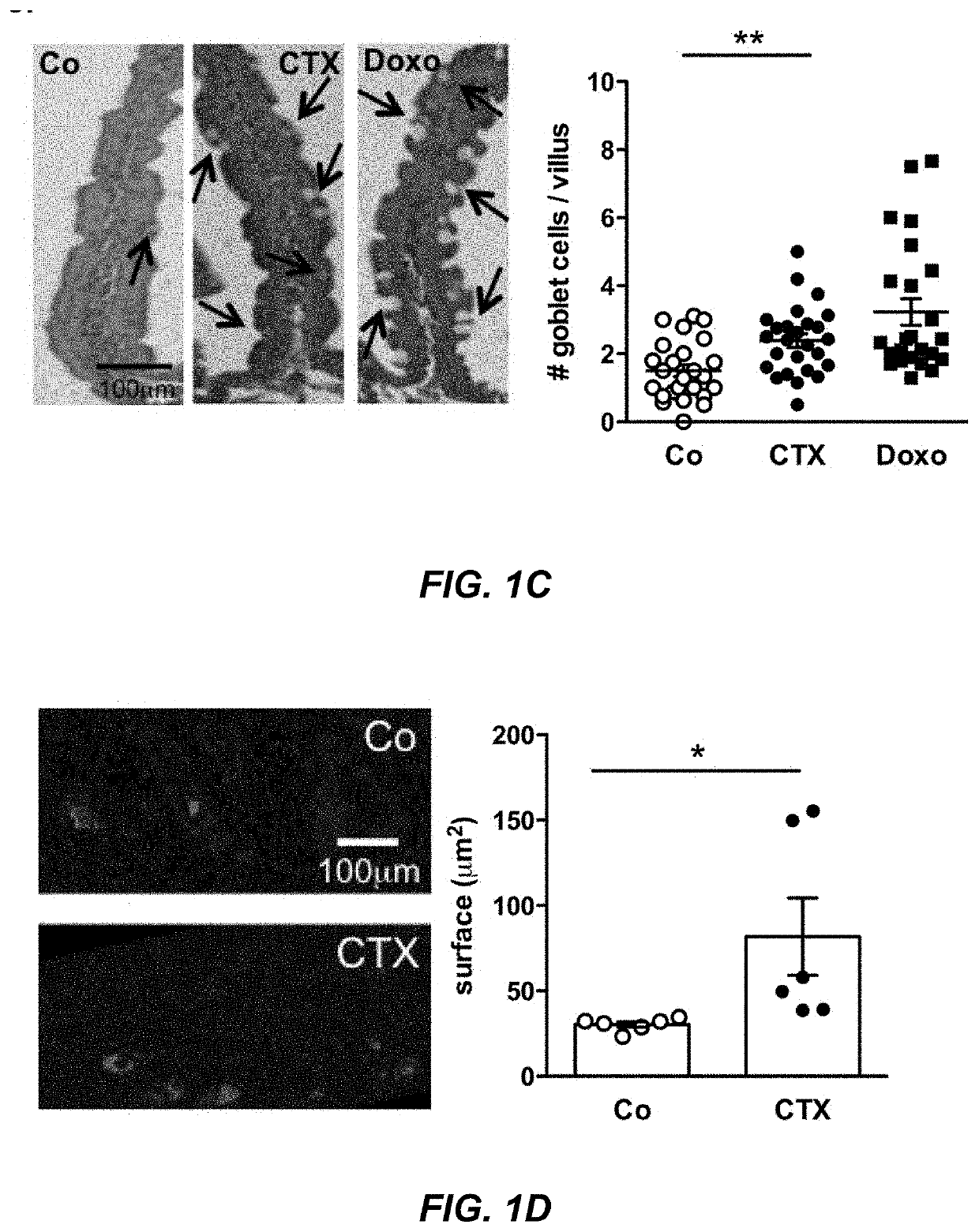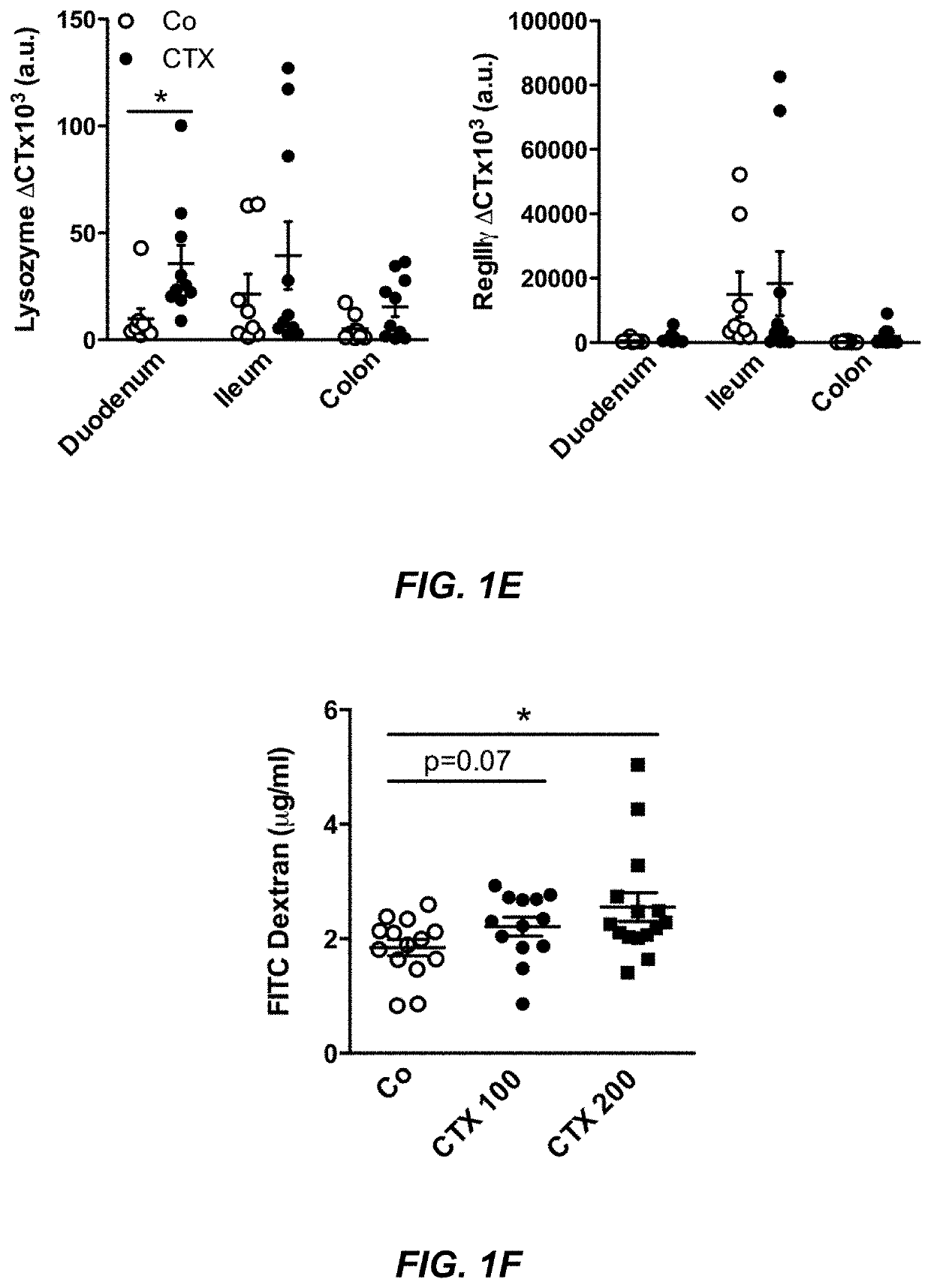Microbiota composition, as a marker of responsiveness to chemotherapy, and use of microbial modulators (pre-, pro- or synbiotics) for improving the efficacy of a cancer treatment
a technology of microorganisms and cancer treatment, applied in the field of anticancer treatment, can solve the problems of increased risk, significant drawbacks, increased susceptibility to infection, etc., and achieve the effects of reducing the ratio of firmicutes/bacteroidetes, reducing clostridium group iv, and enhancing sfb and/or porphyromonadacea
- Summary
- Abstract
- Description
- Claims
- Application Information
AI Technical Summary
Benefits of technology
Problems solved by technology
Method used
Image
Examples
example 1
tinal Microbiota Modulates the Anticancer Immune Effects of Cyclophosphamide—Mouse Study
Materials and Methods
[0192]N. b.: absent contrary indication, the materials and method which are described in the present example are those which have also been used in the other examples.
[0193]Animals and Tumor Models.
[0194]All animal experiments were carried out in compliance with French and European laws and regulations. Mice were used between 7 and 14 weeks of age. WT SPF C57BL / 6J and DBA2 / J mice were obtained from Harlan, Charles River or Janvier and kept in specific pathogen-free conditions (SPF). Nod1− / − Nod2− / − and Nod2− / − C57BL / 6J mice were provided by I. Gomperts Boneca (Institut Pasteur, France), Myd88− / − C57BL / 6J mice by B. Ryffel (CNRS, France) and C57BL / 6J germ-free mice were obtained from CDTA (Orleans, France) or Institut Pasteur and maintained in sterile isolators. MCA205, B16F10 (syngeneic from C57BL / 6J mice) and P815 (syngeneic from DBA2 / J mice) were cultured at 37° C. under 5%...
example 2
tinal Microbiota Modulates the Anticancer Immune Effects of Cyclophosphamide—Results on a Preclinical Model Mimicking Human Tumorigenesis
[0249]A transgenic tumor model of autochthonous NSCLC driven by oncogenic K-Ras coupled to a conditional P53 deletion (as initially described by T. Jacks, Cell 2012) was used to test the inhibitory role of vancomycin-based antibiotherapy on the anticancer efficacy of a combination of oxaliplatin plus CTX. In this preclinical model mimicking human tumorigenesis, the concept that the eradication of Gram-positive bacteria by vancomycin compromised the efficacy of CTX-based chemotherapy was validated (FIG. 19A and FIG. 4D), correlating with a reduced intratumoral CD8+ T effector / Foxp3+ regulatory T cell ratio (FIG. 19B).
[0250]Thus, Gram-positive bacteria appear to be necessary for the optimal efficacy of the CTX-induced anticancer immune response and tumor mass reduction.
example 3
ults: Cyclophosphamide Induces Th1 and Th10 Immune Responses Directed Against Commensal Bacteria in Cancer Patients
[0251]In order to further demonstrate that CTX induces bacterial translocation to secondary lymphoid tissues in humans as in mice, the inventors assessed memory CD4+ Th1 cell responses, in peripheral blood, specific for a series of bacteria in advanced cancer patients before and after treatment with metronomic cyclophosphamide (CTX). The responses that were monitored included those against enterococci (E. hirae and E. faecalis, both immunogenic in mice receiving CTX), lactobacilli (L. johnsonii and the less relevant L. plantarum), as well as against E. coli. The results were obtained from 6 patients with metastatic ovarian cancer treated with CTX+Avastin (Viaud et al., 2011), 3 NSCLC (non small cell lung cancer) patients treated with CTX before a DC-based exosome Phase II vaccine trial (Chaput et al., 2006), and 2 melanoma patients enrolled in a Phase I trial of targete...
PUM
 Login to View More
Login to View More Abstract
Description
Claims
Application Information
 Login to View More
Login to View More - R&D
- Intellectual Property
- Life Sciences
- Materials
- Tech Scout
- Unparalleled Data Quality
- Higher Quality Content
- 60% Fewer Hallucinations
Browse by: Latest US Patents, China's latest patents, Technical Efficacy Thesaurus, Application Domain, Technology Topic, Popular Technical Reports.
© 2025 PatSnap. All rights reserved.Legal|Privacy policy|Modern Slavery Act Transparency Statement|Sitemap|About US| Contact US: help@patsnap.com



